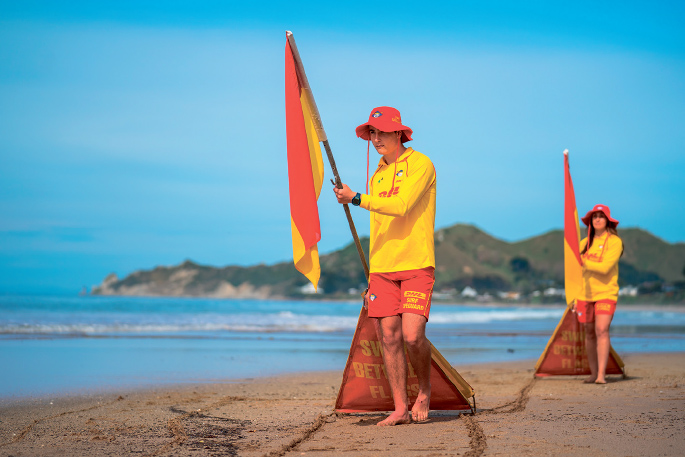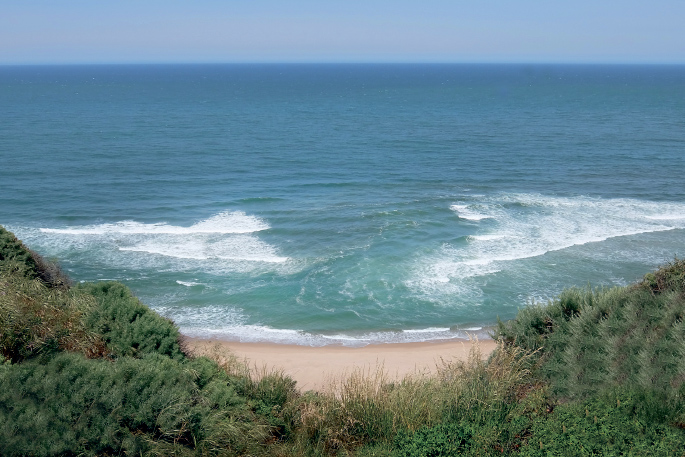Rips claim the lives of dozen of New Zealanders every year – people who are caught unawares, panic and exhaust themselves trying to swim back to shore against a current that will almost always win.
If you’re swimming, surfing or paddling along our coastlines this summer, it’s important to learn how to read the conditions to avoid danger and know how to escape a rip if you’re in one.
WaterSafety NZ says 64 people have died in rips in the Bay of Plenty alone since 1980. If you look carefully enough, you’ll almost always be able to spot a rip somewhere along the beach. It’s worth noting that rips can be harder to spot on windy days. They can also shift to a different spot within a few hours so stop and regularly check your surroundings.
What are rip currents?
A rip forms when waves break over a sandbar near the shoreline. The water and its momentum get trapped between the sandbar and shore but it must have somewhere to go. That pressure is relieved once a rip forms. This narrow but powerful stream of water and sand moves swiftly away from shore. Rip currents can vary in size and speed but are found on virtually every beach. They won’t pull you under the water – instead they’ll carry you out further, away from shore.
What to look for
• Calm patches where waves are breaking on each side. Waves don’t tend to break in a rip as the water flows in the opposite direction
• Rippled or criss-cross water
• Discoloured or murky brown water caused by sand stirred up off the bottom
• Foamy water with debris like seaweed floating out to sea
What to do if caught in a rip
Remember the 3Rs Rip Survival Plan:
• RELAX and float to conserve your energy
• RAISE your hand to signal for help
• RIDE the rip until it stops and you can swim back to shore or help arrives.
Swimming between the flags is the safest way to avoid rips as lifeguards choose spots well away from dangerous feeder currents that can sweep you sideways into a rip.
Surf Lifesaving NZ Eastern Regional Manager, Chase Cahalane, says rips are “almost always” responsible for swimmers getting into trouble. Last summer (2018/19) there were 700 rescues and assists carried out nationwide due to rips.

“They’re absolutely everywhere and this summer, anecdotally, we have done more rip rescues than in the previous season. We’ve had more surf and even better weather so we’ve had a lot of people on the beach. The lifeguards have been very busy.”
Chase says an easy way to identify rips is by looking on Google Maps using satellite imagery. “At low tide you can see all the wet sand – everywhere it looks like there’s a wee river or lines going out on the sand, on high tide those will be the rips. Every single one of them. Water always wants to move in the path of least resistance. A rip is essentially a river within the ocean that flows out to where the water is the deepest.”
There are many variables involved including how much sand is carved out in any one place, whether there are any water outlets like estuaries or stormwater pipelines present, the size of the surf, and the size and strength of the tide.
Chase says an exceptionally strong rip on an outgoing tide could take you 80m or more out to sea. “The most recent research on rips actually shows most of them follow a horseshoe style shape. So if you do relax and float and can manage to stay calm, you’ll end up being washed back in.”
While looking for calm patches is a good indicator, some rips don’t exhibit stereotypical features and currents could be moving underneath the waves, he warns.
With that in mind, the number one rule should always be ‘if in doubt, stay out!’



0 Comments
Leave a Comment